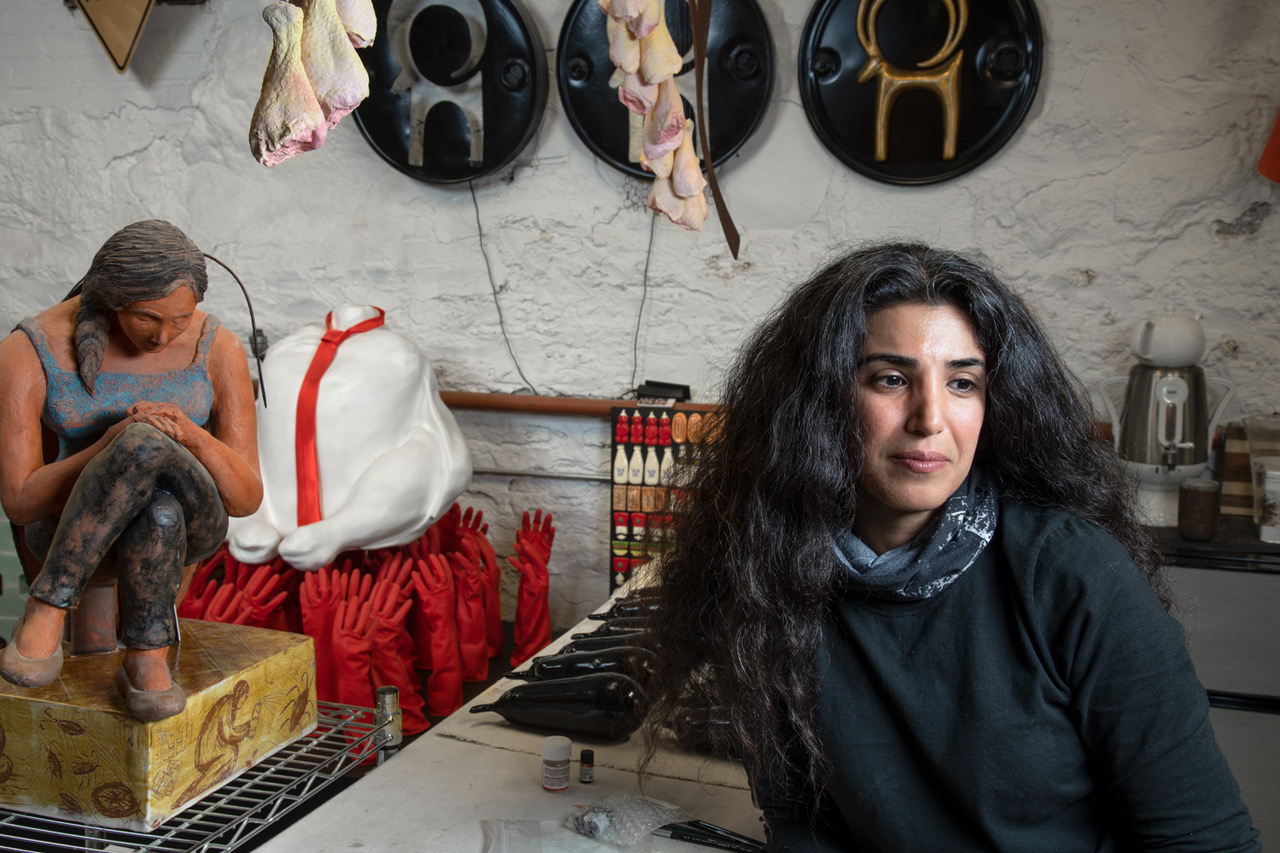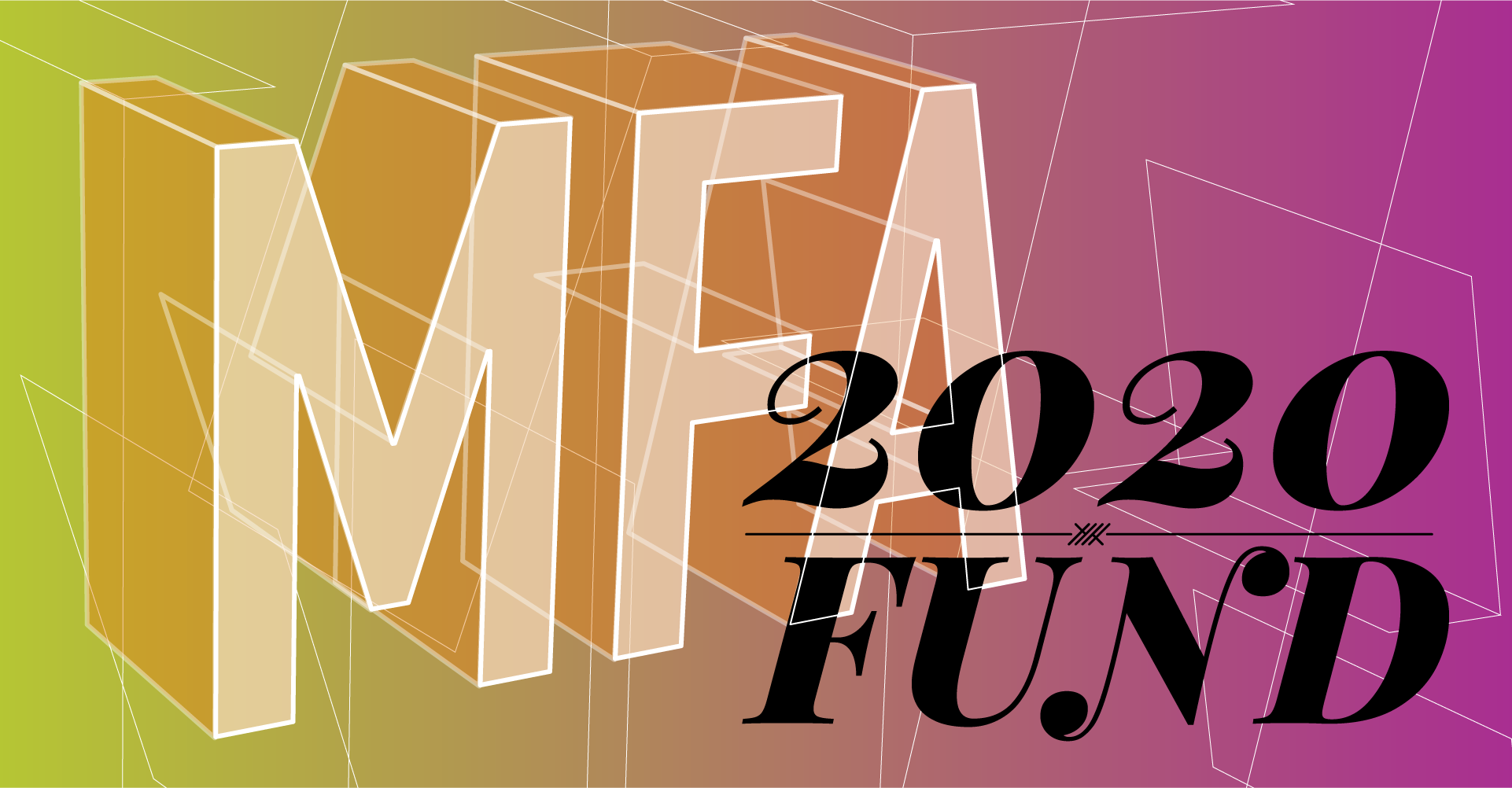Written by kay heino | Photos by Eric Butler
The Jerome fellowship is a great opportunity for any artist working in the twin cities.
Since 1981, this fellowship program, funded by a grant from the Jerome Foundation, has artistically and critically advanced the careers of more than 200 visual artists. Eligible applicants must be in the early stages of their careers and have not yet attained professional acknowledgment commensurate with the quality of their work. MCAD and the Jerome Foundation welcome applications from artists representing diverse cultural perspectives. During the twelve-month fellowship year, each artist receives three studio visits from professional critics, access to technical assistance, a culminating exhibition at the MCAD Gallery, a catalog with a critical essay on each artist’s work, and the opportunity to partake in a public panel discussion.
I had the wonderful opportunity to speak with the 2021/2022 Jerome Fellowship artist Katayoun Amjadi. I got to learn a lot from this virtual conversation: advice for transportation to planning, what to do for a fellowship and what to plan for after graduation. Check out our interview below.
KAY:
Hello, can you introduce yourself and what art you create and anything else you do?
KATAYOUN:
My name is Katayoun Amjadi. I’m a visual artist working mostly in installation and video art. I also work as an adjunct faculty currently at Normandale Community College, University of Minnesota, and here at MCAD as well. On the side, I do independent curatorial work and co-run an art studio building and maintain a small ceramic arts business in the Q.arma building in NE Minneapolis Art District.
KAY:
I found on your website that you’ve exhibited all over the place nationally and internationally. Do you have any advice about showcasing work in places that aren’t locally to yourself?
KATAYOUN:
Except for video work that is digitally transferable to different locales, most of my work is sculptural and installation based. Thus far, only one museum has sent a truck for artwork pickup/drop-off service and a few galleries have covered the shipping costs. Since building crates and packing is generally the responsibility of the artist, I try my best to avoid sending my work out. This normally limits my range of installations to the Tri-State area. Most of the local installations in this area are ones that I have packed and installed. Most of my national and international exhibitions were coupled with art residencies where I could produce the work for the venue right on site.
The arts world is very much about creating and fostering connections and contacts, and requires a fairly dedicated effort by the artist, or by an agent if the artist is lucky enough to have one. Showing work outside of your immediate circle can be difficult, but worth the effort if that’s the direction you choose to go with your work.
KAY:
I also found in my search that you are a part of the 2020/2021 MCAD Jerome fellowship. Apart of this show you discuss a lot of different topics from religion, politics, gender, and nationalistic ideological thinking. Can you share how these topics connect your life and your art practice?
KATAYOUN:
I believe art and life are not separate from one another. Likewise, our personal lives, a small unit of family let’s say, is part of the broader sociopolitical context that engulfs it. This broader system affects our lives. I believe that part of my role as an artist is to ask how, why, and what else can be imagined? To make the connections between all the points that concern the human condition is central to my thinking and making.
KAY:
I know you create a lot of art in a lot of different mediums. As a practicing multimedia artist, This is something I do as well. For the Jerome show, how did you come to the decisions on what to display? (I always have the problem of deciding what should and shouldn’t be shown.)
KATAYOUN:
The process of creative making in any medium is very similar to the writing process for me. The author/artist’s initial brainstorming often leads to ideas drafted, sketched, paragraphs added/omitted, objects made/destroyed, periods of research etc., and ultimately you have to edit/curate the work for the reader or the gallery-goer audience. The Jerome exhibition went through the same process. I find the process of editing or curating your own work the most challenging of them all. In a way, you have to send rejection letters to some of the work that seemed very important at the time of making. The choice of including 4 video narratives and a multimedia installation for the Jerome show was to conceptually connect my various art practices together.
KAY:
The MCAD Jerome Fellowship is a large accomplishment, from my perspective as a MFA student at least. I’m sure you have lots of big plans, but can you speak a little about future endeavors?
KATAYOUN:
For some strange reason, I’m not a planner! Never had been and I’m afraid nothing will likely change that as I move forward. I can see the value and truly appreciate the artists who do have 5-year plans for their careers and check them off one at the time. But I have lived a relatively dynamic and fluid life and learned to live day by day, gathering plans for work as needed along the way. For me, each day leads one into the other and as long as I can be who I am, a village potter, then all is good, and there’s no need to create large over-arching plans, but rather to engage fully in the moments as they arrive. Interestingly this seems to lead naturally into creative work and a variety of installations that tend to be governed by their own time frames that can range from a couple of months to a couple of years. The result is a very full life of all manner of creative challenges. This is as it should be and satisfies my restless curiosity about the world.
KAY:
And this is a question I like to ask everyone due to the amount of different answers I receive. But do you have any advice for a soon to be graduating MFA student about after graduation (ex. Apply for shows, apply for grants, don’t lose your friendships you make)
KATAYOUN:
Write a 5-year plan! Well, maybe, if that is what suits your style. I think part of the key is to really understand what it is you want to do. This in itself can be daunting since you may not know until you start testing the waters to see what works for you. I believe having in mind a broad view of where you would like to be, both in terms of location and your conceptual work, but also with some flexibility built into the planning, can be useful. The art world is fickle and the world itself can surprise, delight or dismiss you. Being fluid in your thinking, and being able to move laterally along the way can be a great benefit. Make great connections, keep them active and forward thinking, do great work and plug in to anything that seems close to your heart.

Katayoun Amjadi "This is Not an Eggplant" Photo credit to Rik Sferra’s

Katayoun Amjadi "This is Not an Eggplant"

Katayoun Amjadi "This is Not an Eggplant"

Katayoun Amjadi - Eggplant (on the left) and Operation Ajaz (projection-on-the-right)

Katayoun Amjadi "Operation Ajax"



